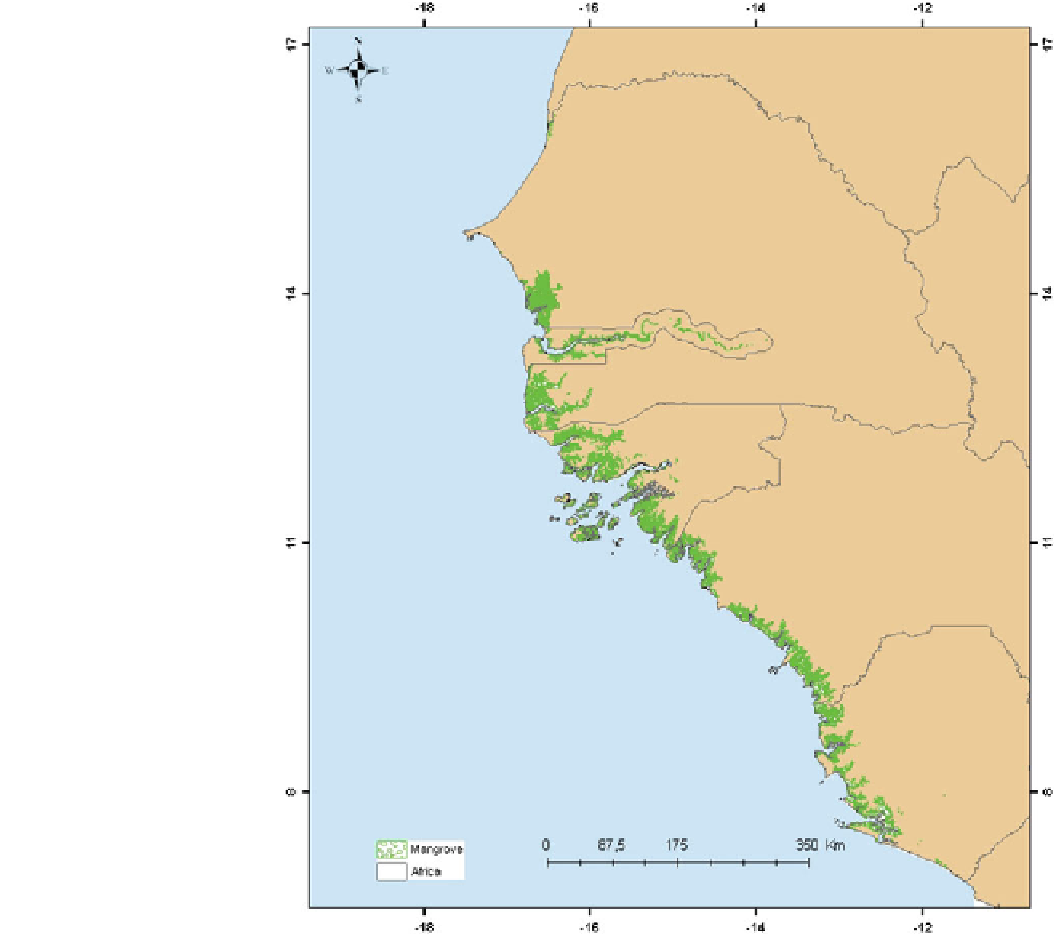Environmental Engineering Reference
In-Depth Information
Fig. 3
Mangrove coverage
(Source RAMPAO 2014)
in national policies, laws and management mechanisms for
the conservation of mangrove habitats. These actions sub-
sequently led to the signing of a regional charter on the
conservation and sustainable reuse of mangroves by six
countries in the region (Mauritania, Senegal, Gambia,
Guinea, Guinea Bissau, and Sierra Leone). The common
vision expressed in this charter focuses on a respect of joint
principles while implementing nationally defined action
plans that reflect to local realities (Mangrove Charter
2009
).
The process by which this consensus was reached
emphasized a respect of each country's national priorities
and context (Duval-Diop 2012). For example, in Maurita-
nia, mangroves are completely protected and cannot be
exploited by local populations. However, in other countries
such as Sierra Leone or Guinea Bissau, the ecosystem ser-
vices provided by mangroves represent a significant amount
of income for populations. Attempting to forbid the
exploitation of mangroves would have failed. Instead in
these countries, the pursuit of sustainable management
practices that follow the general guidelines described in the
regional charter is more practical and feasible.
The high level of engagement and motivation of coastal
communities who now understand the need to conserve
their resources and who have the ability to do so will ensure
the sustainability of the successes described above. Without
building the awareness of local population, this engagement
and
the
sustainable
adoption
of
conservation
practices
would remain insurmountable.
Huitema et al. (
2009
) assert that the effectiveness of
collaboration in networked governance can be influenced by
how activities are ordered. Therefore, tasking various col-
laborating partners with the simultaneous implementation

Search WWH ::

Custom Search